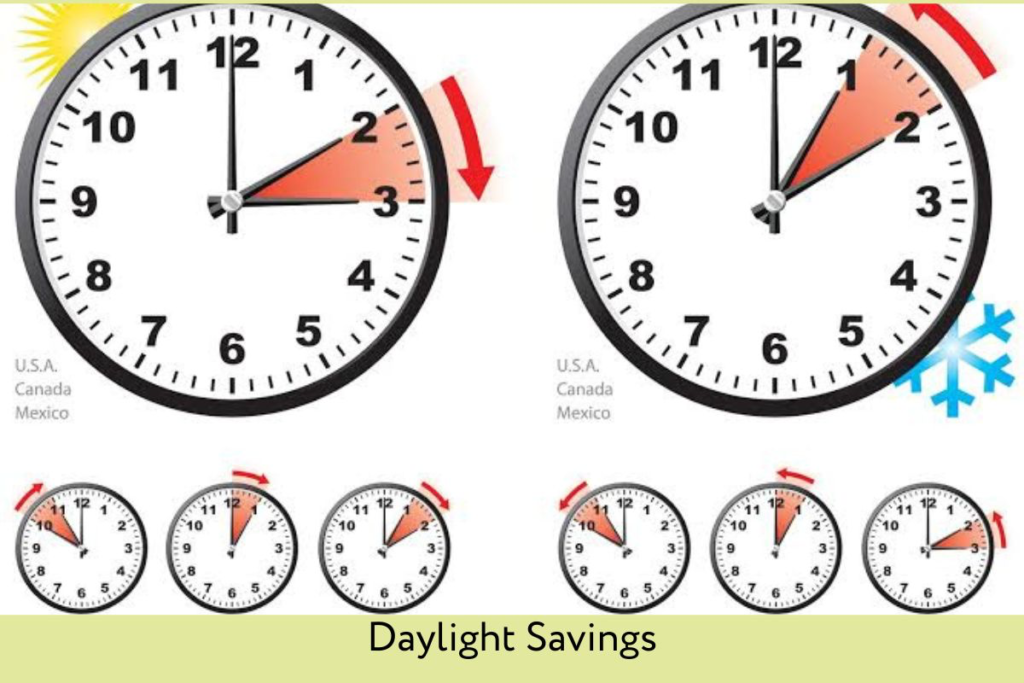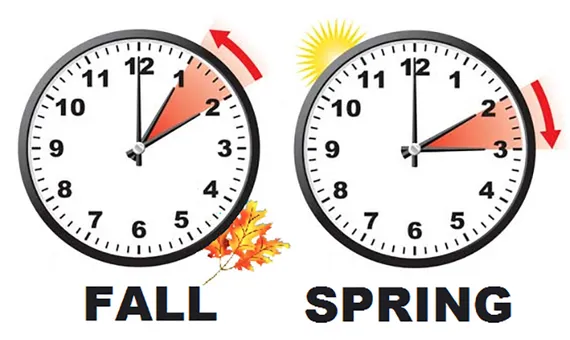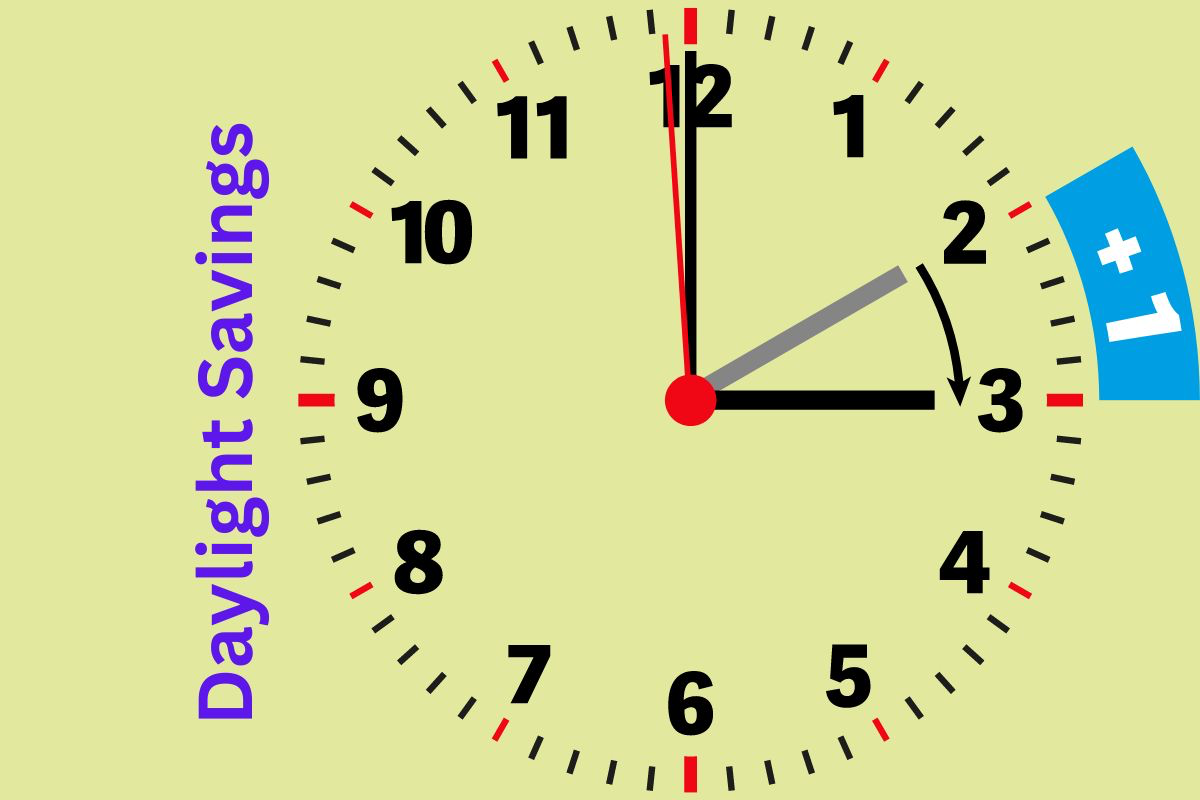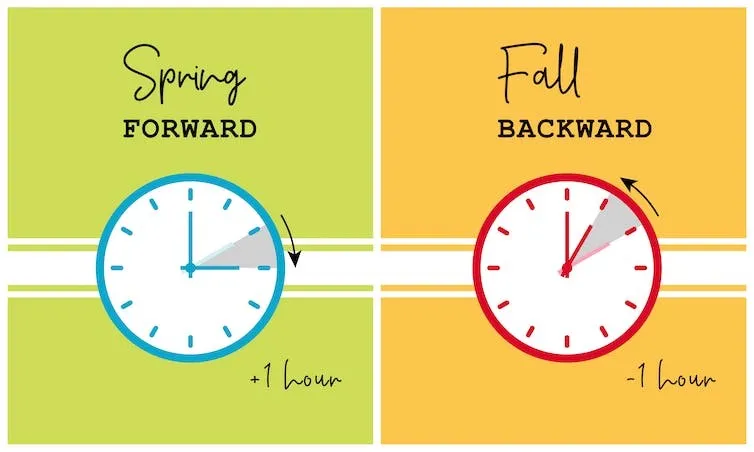Spring Forward, Fall Back: A Dive into the Daylight Saving Time Saga

What is Daylight Saving Time (DST)?
Daylight Saving Time (DST), also known as summer time in some parts of the world, is the practice of setting clocks forward one hour during the summer months. This aims to make better use of natural daylight by shifting an hour of sunlight from the morning to the evening. In effect, we “spring forward” in the spring and “fall back” in the autumn.
A Glimpse into the History of DST
The concept of manipulating time to maximize daylight hours is surprisingly old. While Benjamin Franklin famously suggested it in a satirical essay in 1784, the idea wasn’t seriously considered until the early 20th century.
Credit for the modern implementation of DST is often given to William Willett, a British builder who lobbied for daylight saving in the early 1900s. Willett believed it would benefit public health and the economy by encouraging people to spend more time outdoors during the evenings.
World War I served as a catalyst for DST adoption. Germany first implemented it in 1916 to conserve coal. Many other countries followed suit, recognizing the potential energy savings during wartime.

Why Do We Have Daylight Saving Time?
The original justification for DST was to conserve energy. The theory was that by having more daylight hours in the evening, people would rely less on artificial lighting. However, the energy-saving benefits of DST are debated in the modern world.
Here’s a breakdown of the arguments for and against DST:
- Pros:
- Potential Energy Savings:While the impact on energy use is disputed, some studies suggest a slight decrease in electricity consumption during DST due to less reliance on evening lighting.
- Economic Benefits:Supporters argue that longer daylight hours in the afternoon encourage people to spend more time outdoors, potentially boosting economic activity in sectors like retail and recreation.
- Increased Safety:Some studies suggest a decrease in traffic accidents during DST, possibly due to better visibility in the evenings.
- Cons:
- Health Disruptions:The time change associated with DST can disrupt sleep patterns, leading to fatigue and decreased productivity.
- Negative Economic Impact:Opponents argue that the initial productivity loss due to sleep disruption can outweigh any economic benefits.
- Questionable Effectiveness:Modern lighting technology and changes in work and leisure patterns may have rendered the original energy-saving rationale for DST less relevant.

The Global Landscape of DST
The use of DST varies widely across the globe. While many countries in North America, Europe, and Asia observe DST, others, like most of South America and Africa, do not. Even within regions that use DST, the specific start and end dates can differ.
This lack of global uniformity can be confusing, especially for travellers. Here are some interesting facts about DST around the world:
- Iceland, for example, observes DST year-round due to its extreme seasonal variations in daylight hours.
- In some parts of Canada, DST starts and ends on different dates than in the United States.
- Many countries have debated abolishing DST altogether, citing the potential health and economic drawbacks.
Is DST Obsolete? The On-going Debate
The effectiveness and relevance of DST remain a topic of on-going debate. Here are some key points to consider:
- The Impact on Sleep:Studies have shown that the time change associated with DST can disrupt sleep patterns, leading to short-term health consequences like fatigue, mood swings, and increased risk of accidents.
- The Energy Savings Question:The energy-saving benefits of DST are contested. Modern lighting technology and changes in work and leisure patterns may have reduced its effectiveness.
- Economic Considerations:While some argue that longer daylight hours in the evening boost economic activity, others point to the potential loss in productivity due to sleep disruption.
- Public Opinion:Public opinion on DST is divided, with some people favouring the extended daylight hours and others preferring the consistency of standard time.
The Future of Daylight Saving Time
Looking ahead, the future of DST remains uncertain. Several countries and regions have experimented with abolishing it or making it permanent. Here are some potential scenarios:
- Standardization:A globally standardized approach to DST could eliminate confusion for travellers and potentially simplify timekeeping.
- Regional Variations:Different regions or countries might adopt their own DST policies based on their specific needs and daylight patterns.
- Permanent DST:Some regions might opt for permanent DST, favouring the extended daylight hours in the evenings.
- Permanent Standard Time:Others might choose to stick with standard time year-round to avoid the disruption caused by the time change.
Ultimately, the fate of DST will likely depend on a combination of factors, including on-going research on its health and economic impacts, public opinion, and potential advancements in technology that could further impact energy consumption.
Beyond the Basics: Fun Facts and Folklore about DST
Daylight Saving Time has a surprisingly rich cultural history, with its own share of interesting trivia and folklore. Here are a few titbits to add some fun to your knowledge:
- The Early Bird Doesn’t Always Get the Worm:Contrary to popular belief, birds don’t adjust their schedules according to DST.
- Springing Forward, Falling Behind, but Never Stopping:The terms “spring forward” and “fall back” are relatively recent inventions. Early on, various colourful phrases were used to describe the time changes, such as “setting the clocks ahead for sunshine” or “putting the clocks to bed.”
- DST and Cows:An urban legend claims that cows get confused by the time change associated with DST. While there’s no scientific evidence to support this, it highlights the humorous misconceptions surrounding DST.
A Balancing Act
Daylight Saving Time is a practice with a long and complex history. While its original purpose of energy conservation may be debatable in the modern era, it continues to spark discussions about its impact on health, the economy, and our overall well-being.
As we move forward, the future of DST remains uncertain. Whether we see a global shift towards standardization, regional variations, or even the abolishment of DST altogether, the debate surrounding this practice is likely to continue.
This varies depending on location. In the United States, DST typically starts on the second Sunday in March and ends on the first Sunday in November.
The time change can disrupt sleep patterns, leading to short-term health consequences like fatigue, mood swings, and increased risk of accidents.
The energy-saving benefits of DST are contested. Modern lighting technology and changes in work and leisure patterns may have reduced its effectiveness.
There are various reasons. Some countries may not see a significant benefit from the additional daylight hour, while others prioritize the consistency of standard time.
Daylight Saving Time is a topic with far-reaching implications. Stay informed and participate in discussions about DST in your community. Consider the potential benefits and drawbacks, and voice your opinion on whether you think DST should be kept, abolished, or modified.

